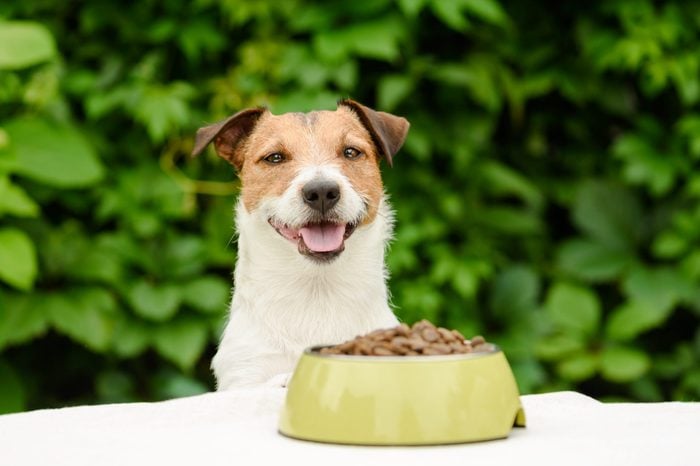
Even tiny dogs have big nutritional needs
If you share your home with a Yorkie, Chihuahua, Pug, or any other tiny-but-mighty pooch, you know how playful, sweet, and surprisingly brave they can be. What you may not know, however, is that the dog food necessary for small dogs to thrive is somewhat different than that of their more imposing doggy brethren. Here’s what you need to keep in mind to ensure that your wee sweetie stays healthy.
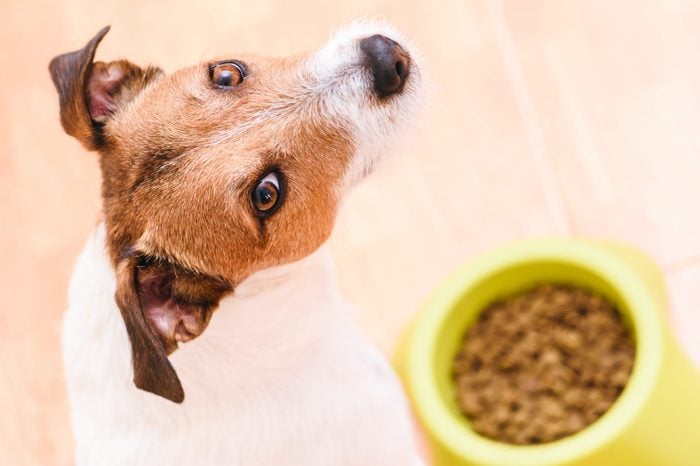
The best dog food for your small-breed dog
So, with all that in mind, what should you be buying? There are lots of options on the market that will work well, but the veterinarians we spoke with definitely have a few favorites. In fact, Dr. Carlson gives his dog a variety of them. “For my eight-pound Yorkie, I feed a combination,” he shares. “I really like Ziwi, which is a great addition to a small dog’s diet and is very naturally made. Of the packaged kibble options on the market, I’m a huge fan of Farmina Non-GMO, a raw, dehydrated kibble that comes in a mini bite-size.”
Antje Joslin, DVM, a veterinarian for Dogtopia, is a fan of Royal Canin’s breed-specific formulas for healthy pets. “I like them because they are backed by nutritional science and are palatable. I feed my own dogs the Royal Canin skin-support formula,” she says. “Purina Pro Plan and Science Diet both have some great foods as well. I would stick with a brand that has nutritional research behind it.” And just FYI, she wouldn’t recommend choosing a grain-free formulation unless your vet has officially diagnosed your dog with a grain sensitivity. If that’s the case, one good option is Just Food for Dogs, which is handmade in small batches.
Eukanuba is also worth taking a look at, according to Sara Ochoa, DVM, a veterinary consultant for DogLab.com. But currently, she’s giving Royal Canin to her 9-year-old Schnoodle, Ruby. “Their breed-specific foods are the easiest way to make sure that your dog is getting the correct amount of nutrients for [each] breed,” she says.
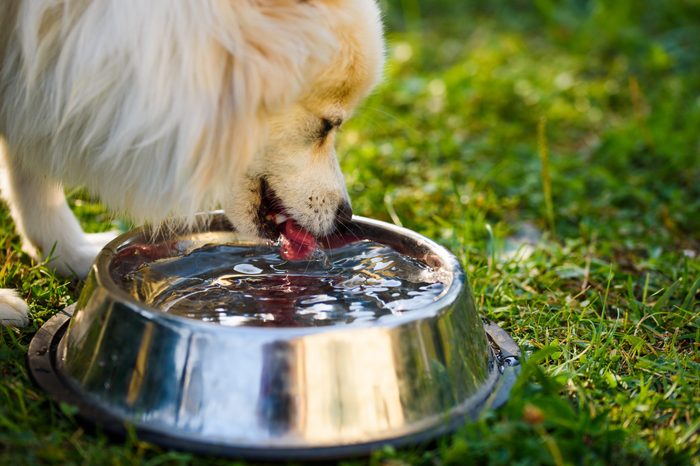
Hydration matters
Calories and nutrients aren’t the only things that matter for pint-size pooches. Having fresh water readily available is extra important for toy breeds, says Dr. Carlson. Incorporating moisture into meals with occasional wet food also helps. Here’s his personal tip: “My eight-pound Yorkie is spoiled, so when she won’t eat the kibble right away, I usually add broth, which I make at home from discarded chicken or meat bones in the slow cooker. She finishes her bowl, plus this offers extra hydration, which is always helpful to a small breed.”
Some dog parents find canned food to be a bit of a hassle, especially since their pup may not finish an entire can at once. Wet food, though, doesn’t necessarily have to come in a can. You might want to consider Canidae petite morsels, which come in 3.5 ounce plastic trays you can refrigerate after they’re opened. For more health-conscious foods, check out the best probiotic dog foods.
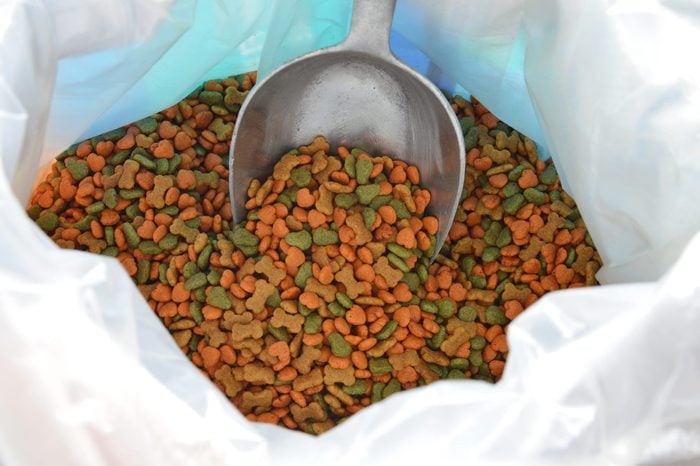
Dog-food basics
Dogs, including toy breeds, are not strictly carnivores, according to the American Kennel Club (AKC). Our domestic dogs need fruits, vegetables, and grains for a complete diet. Per the AKC, most commercial dog foods contain all of the nutrients that small dogs need to stay healthy. That’s good news, since few owners are experts in dog nutrition. Those dry or canned foods you’ll find on the shelves will eliminate the guesswork. How can you double-check? A quality dog food will be labeled “Complete and Balanced,” and it will consist of protein, carbs, fiber, and vitamins and minerals. In general, this is the very best diet for dogs, according to vets.

Look at the label
Beyond those general guidelines, you should look for food that is specifically labeled as being for small or toy breeds. What’s the difference? “Dog food made for smaller dogs is calorically denser since their metabolism is higher,” explains Amy Learn, VMD, a resident of clinical behavioral medicine at the Florida Veterinary Behavior Service in West Palm Beach. Also, the kibble will be smaller, so it will be easier for little mouths to chew it properly.

Calorie considerations
As far as how much food to feed your small dog, follow the package’s directions unless your vet advises otherwise. “Keep in mind that small dogs do burn more calories per pound than large dogs,” notes Jim D. Carlson, DVM, a holistic veterinarian at the Riverside Animal Clinic in McHenry, Illinois. “And sometimes they can become hypoglycemic if they aren’t eating enough.” That’s why Dr. Carlson likes to make room in his own toy-breed dog’s diet for snacks throughout the day. “Not just a single treat, but more like a mini-meal—perhaps a few spoons of wet food—to keep that fire burning in a small dog.” He recommends using a pet calorie counter to stay on track. If you do wind up with a pudgy Pekingese, try these tips for slimming down overweight pets.
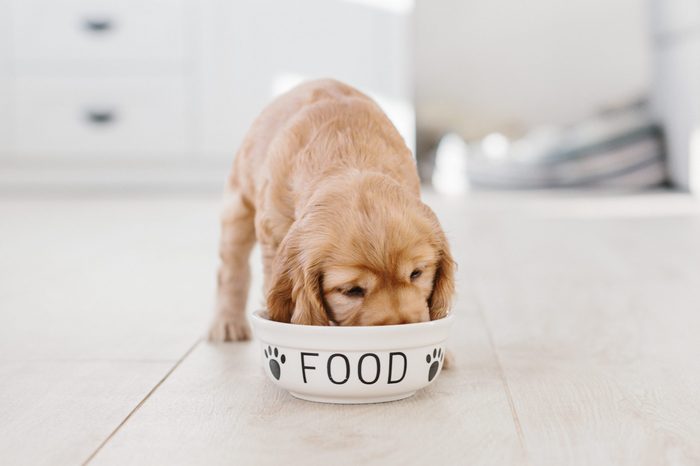
Mix it up
Another way to ensure that your small breed pup gets the nutrition he needs is through rotational feeding—basically, varying protein sources, formulas, and styles instead of sticking to the same thing day in and day out. “This can be especially beneficial for small breeds to obtain more quality protein,” says Danielle Bernal, DVM, a veterinarian with Wellness Natural Pet Food. Dr. Bernal recommends varying the protein source each day. If that seems too frequent, you can do it each week. “Also, feed both wet and dry food to provide different textures,” she adds. “Wet food can come in flakes, shreds, and pâtés.” Here are some of the best dog food brands that veterinarians feed their own pets.
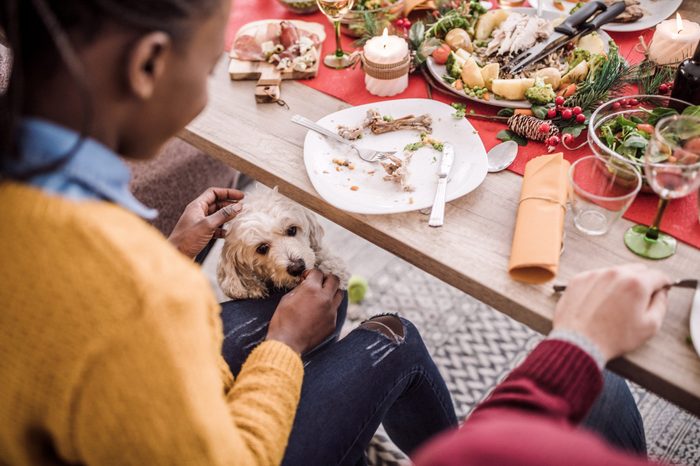
The people-food problem
Your food is not nutritionally appropriate for dogs, no matter how pitiful those puppy eyes are. In fact, some common foods can be toxic to dogs. So while it may seem harmless to give your Shih Tzu a nibble of fried chicken, don’t. “Although sometimes sharing whatever you’re eating with your dog is tempting, it isn’t really in their best interests,” says Rachel Barrack, DVM, a veterinarian at Animal Acupuncture in New York City. “People food is often too rich and seasoned and can wreak havoc on canine digestive tracts. Unfamiliar foods can cause vomiting, diarrhea, or even inflammation of the pancreas, known as pancreatitis, which can be life-threatening.”
Aside from the health concerns, it can be a hard habit to break. Your Westie may be super cute, but his relentless begging every night won’t be.

Just remember: Your small dog is unique
Small breeds are among the most popular, and it’s not hard to see why. They don’t require a big house or yard. They’re easy to travel with. And they’re crazy-cute since they look like puppies forever. But don’t lump them all together. “Like people, dogs have many individual needs. There is no one-size-fits-all food,” says Dr. Joslin. “Age, lifestyle, and health conditions should all factor in.” Your veterinarian should be your go-to for any questions you have about what specific food is ideal for your one-of-a-kind little buddy.
